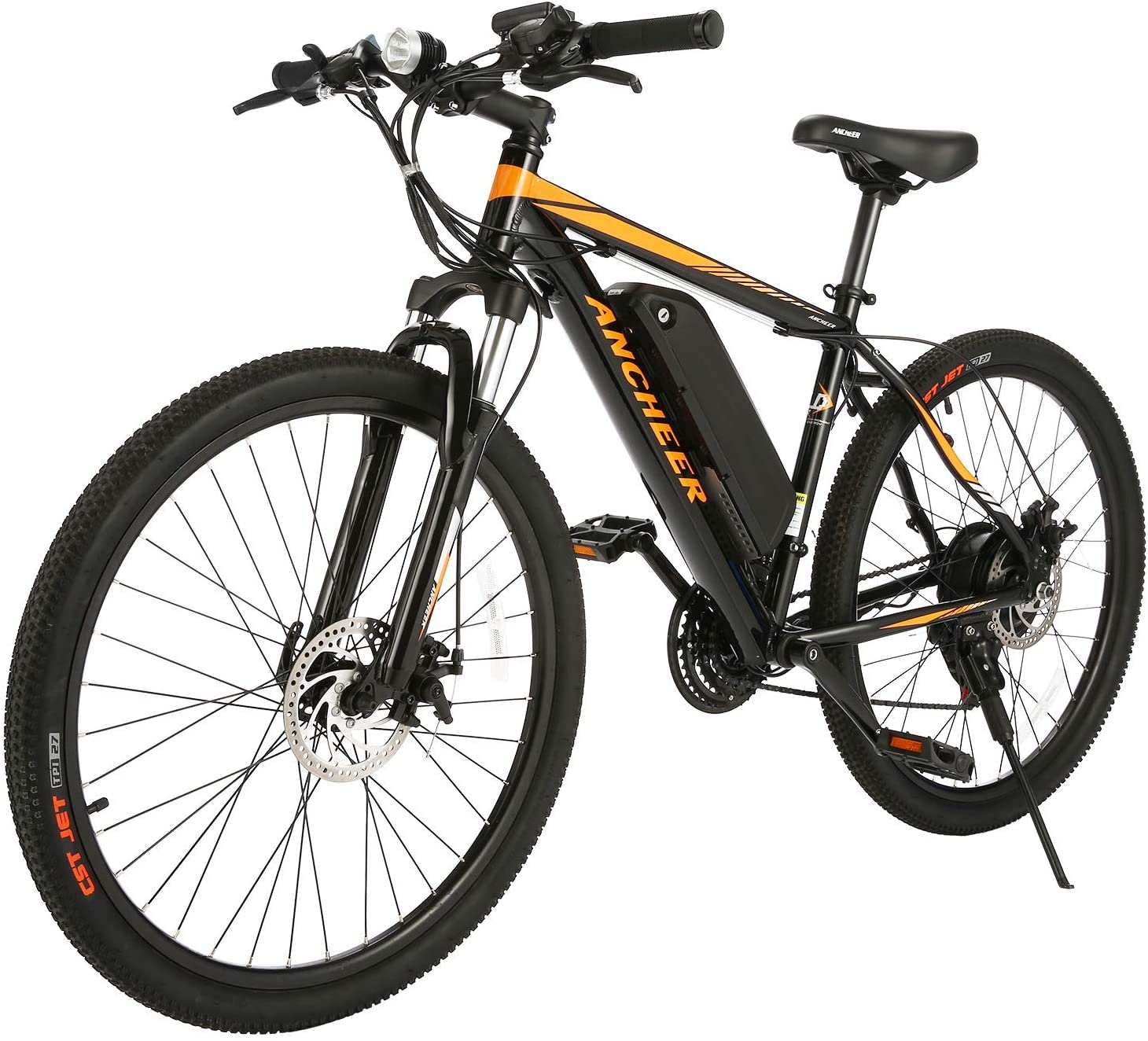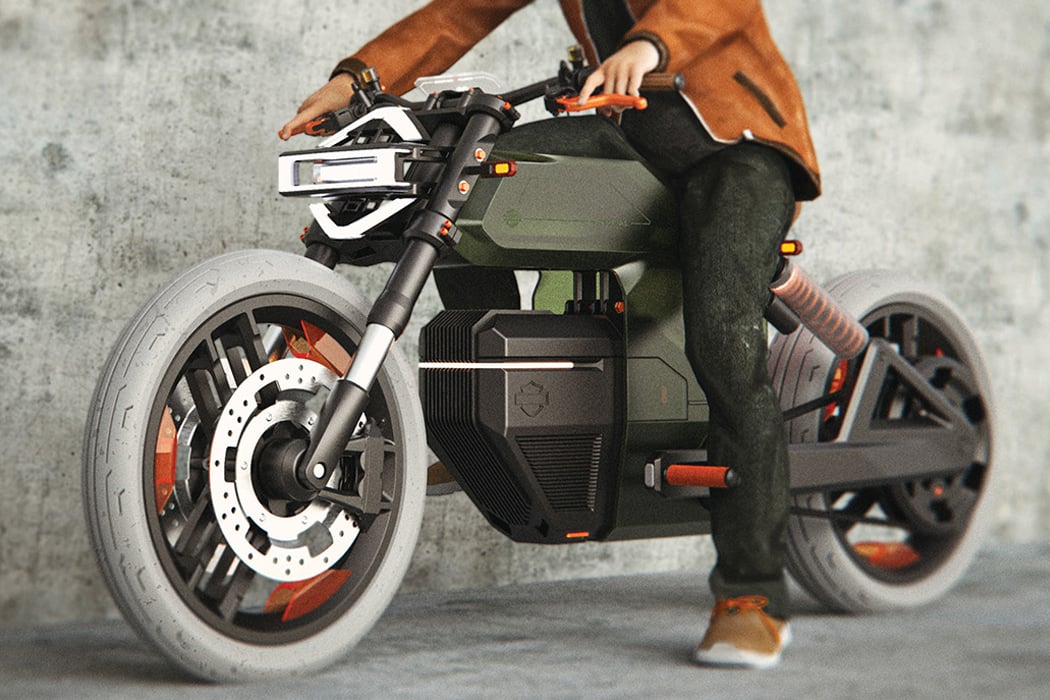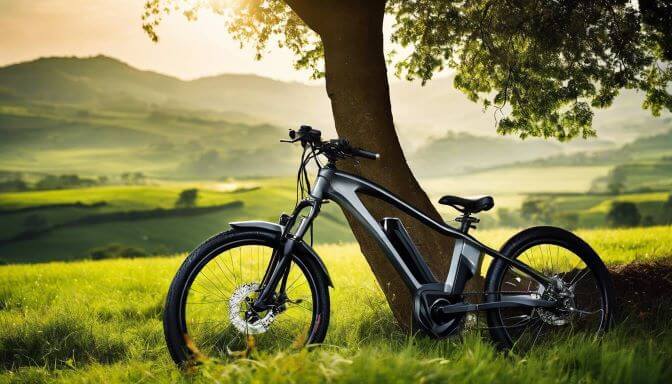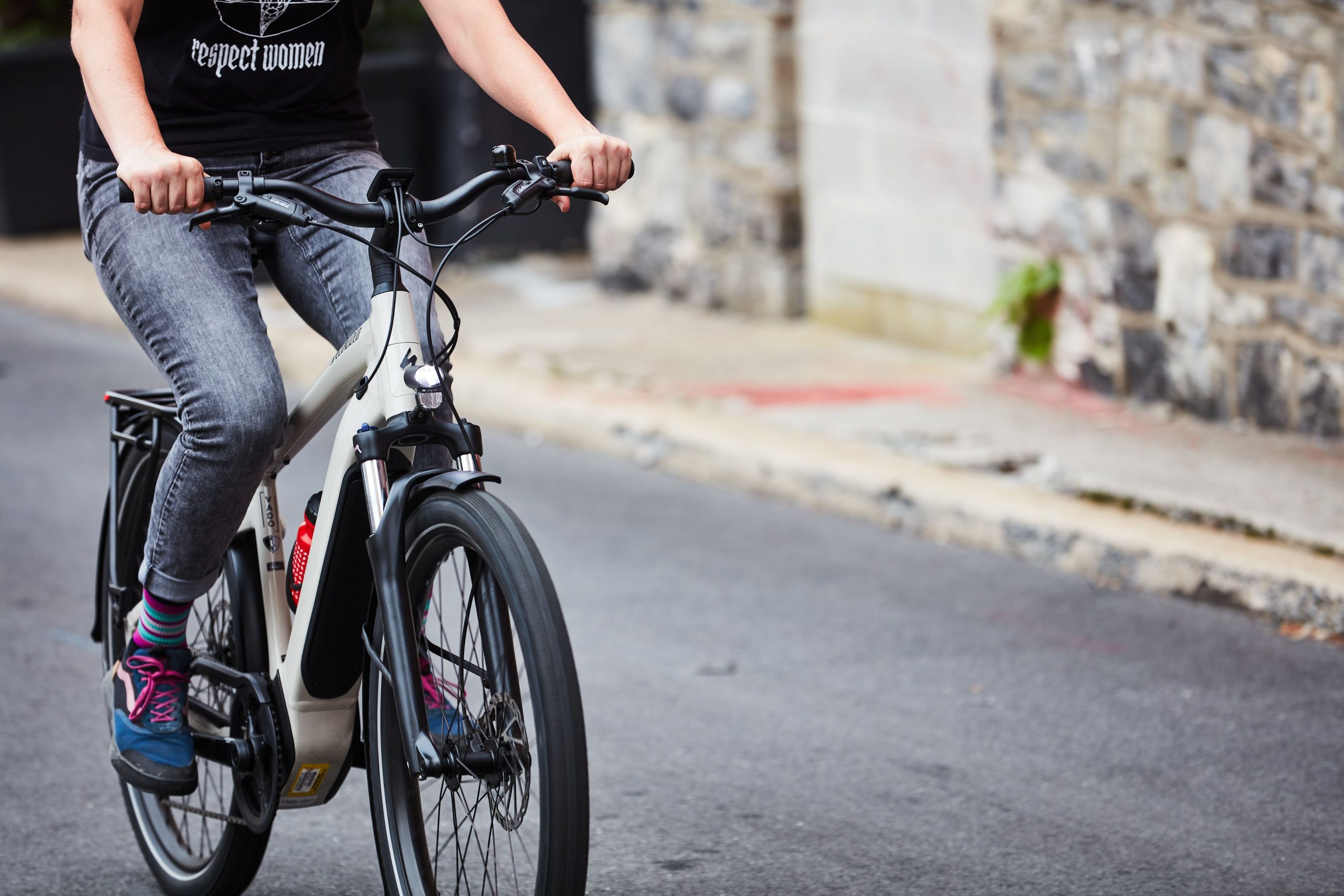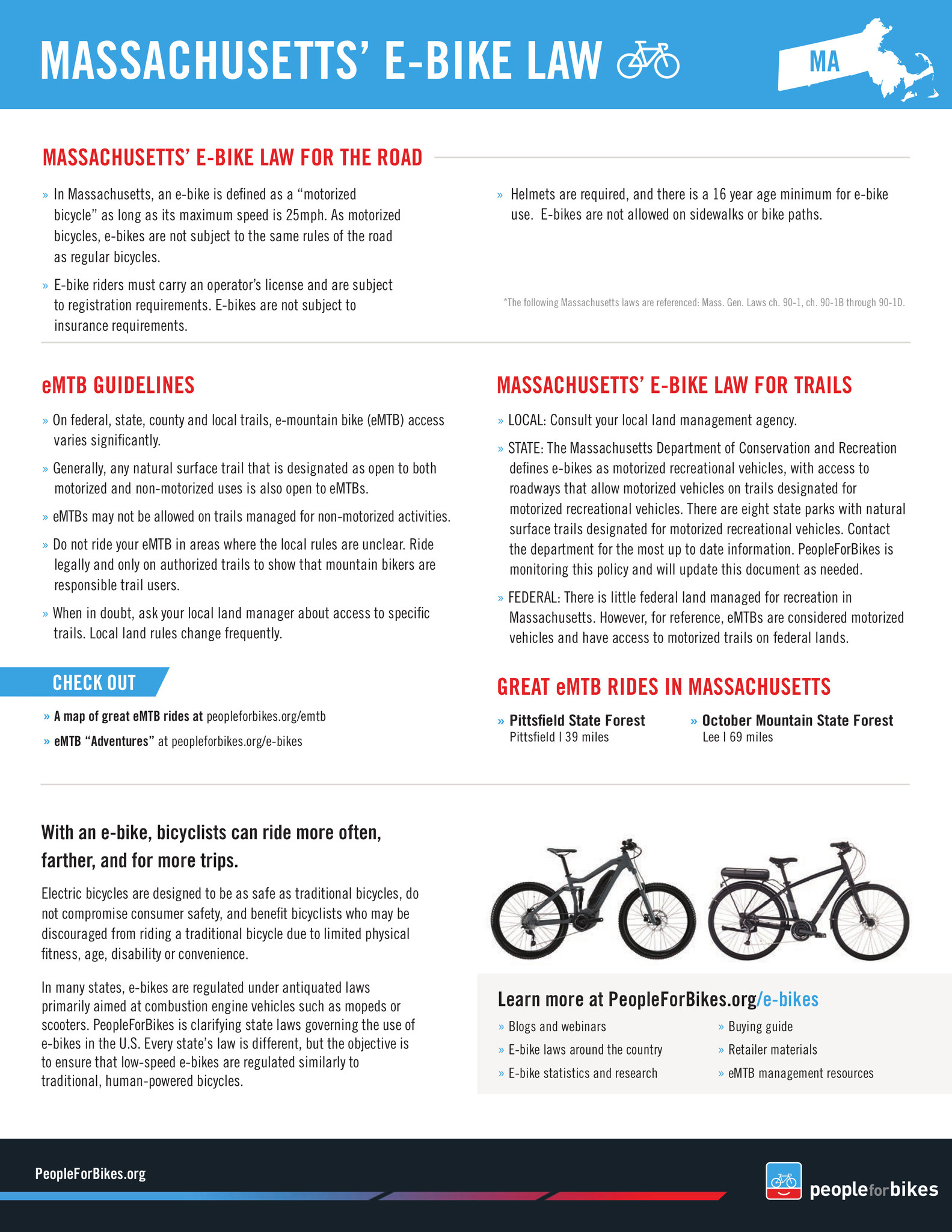What is an Electric Bike and How Does it Work?
An electric bike, also known as an e-bike, is a type of bicycle that uses an electric motor to assist the rider’s pedaling. The concept of e-bikes has been around for decades, but recent advancements in technology have made them more efficient, affordable, and environmentally friendly. So, what is a e bike, and how does it work?
The basic components of an e-bike include a motor, battery, and controls. The motor is usually located in the rear hub or near the pedals, and it provides assistance to the rider’s pedaling. The battery is typically located on the frame or in the rear rack, and it powers the motor. The controls, such as the throttle and display screen, allow the rider to adjust the level of assistance and monitor the bike’s performance.
E-bikes differ from traditional bicycles in several ways. Firstly, they provide electric assistance, which makes it easier to ride uphill or over long distances. Secondly, they have a more complex system of components, which requires more maintenance and upkeep. Finally, e-bikes are generally heavier and more expensive than traditional bicycles.
Despite these differences, e-bikes offer several benefits over traditional bicycles. They provide a more efficient and environmentally friendly mode of transportation, reducing carbon emissions and reliance on fossil fuels. They also offer a more comfortable and convenient riding experience, making it easier to commute or ride for recreation. Additionally, e-bikes can be customized to suit individual preferences, with various types of motors, batteries, and controls available.
So, what is a e bike? It’s a versatile and innovative mode of transportation that combines the benefits of traditional cycling with the convenience of electric assistance. Whether you’re commuting to work, riding for recreation, or simply looking for a more environmentally friendly way to get around, an e-bike is definitely worth considering.
In the next section, we’ll explore the different types of e-bikes available, including commuter, mountain, road, and hybrid models. We’ll also discuss the key features and benefits of each type, helping you to choose the right e-bike for your lifestyle and preferences.
Understanding the Types of Electric Bikes: A Breakdown of Styles and Features
When it comes to electric bikes, there are several types to choose from, each with its unique features and benefits. Understanding the different types of e-bikes can help you make an informed decision when selecting the right one for your needs. In this section, we’ll break down the various types of e-bikes, including commuter, mountain, road, and hybrid models.
Commuter e-bikes are designed for urban riding, with features such as fenders, lights, and racks to make commuting easier and more convenient. They typically have a more upright riding position and a comfortable saddle, making them ideal for daily commutes. Examples of commuter e-bikes include the Haibike XDURO and the Giant Road-E+.
Mountain e-bikes, on the other hand, are designed for off-road riding, with features such as wide tires, suspension, and high-torque motors. They are perfect for trail riding and can handle challenging terrain with ease. Examples of mountain e-bikes include the Specialized Turbo Levo and the Trek Rail.
Road e-bikes are designed for speed and efficiency, with features such as narrow tires, drop handlebars, and high-performance motors. They are ideal for fitness enthusiasts and competitive riders who want to ride long distances at high speeds. Examples of road e-bikes include the VanMoof Electrified S and the Pinarello Dyodo.
Hybrid e-bikes combine the features of commuter and mountain e-bikes, with a comfortable riding position and versatile tires. They are perfect for riders who want a bike that can handle both urban and off-road riding. Examples of hybrid e-bikes include the Giant TCX E+ and the Trek FX+.
When choosing an e-bike, consider the type of riding you’ll be doing most often. If you’ll be commuting in the city, a commuter e-bike may be the best choice. If you’ll be riding off-road, a mountain e-bike may be more suitable. If you’re looking for a bike that can handle both urban and off-road riding, a hybrid e-bike may be the way to go.
In addition to the type of e-bike, consider the features that are important to you, such as wheel size, suspension, and gearing. Wheel size can affect the bike’s stability and maneuverability, while suspension can improve comfort and control. Gearing can affect the bike’s performance and efficiency.
By understanding the different types of e-bikes and their features, you can make an informed decision when selecting the right e-bike for your needs. In the next section, we’ll provide guidance on how to choose the right e-bike for your lifestyle, including factors such as budget, terrain, and intended use.
How to Choose the Right Electric Bike for Your Lifestyle
Choosing the right electric bike can be a daunting task, especially with the numerous options available in the market. However, by considering a few key factors, you can find an e-bike that suits your lifestyle and meets your needs. In this section, we’ll provide guidance on selecting the right e-bike for you.
First and foremost, consider your budget. Electric bikes can range from a few hundred to several thousand dollars, so it’s essential to set a budget before making a purchase. Keep in mind that more expensive e-bikes often come with advanced features and higher-quality components.
Next, think about the terrain you’ll be riding on. If you’ll be riding on smooth roads and bike paths, a commuter or road e-bike may be suitable. However, if you’ll be riding on rough terrain or trails, a mountain e-bike with suspension and wide tires may be more appropriate.
Another crucial factor to consider is your intended use. If you’ll be using your e-bike for daily commutes, a commuter e-bike with fenders, lights, and racks may be the best choice. However, if you’ll be using your e-bike for recreational purposes, a mountain or road e-bike may be more suitable.
It’s also essential to consider the distance you’ll be riding. If you’ll be riding long distances, look for an e-bike with a high-capacity battery and a comfortable riding position. Additionally, consider the weight and portability of the e-bike, especially if you’ll be storing it in a small apartment or transporting it on public transportation.
Test riding is also an excellent way to find the right e-bike for you. Visit a local bike shop and take a few e-bikes for a spin to see how they feel and handle. Pay attention to the comfort, stability, and overall performance of the e-bike.
Finally, research different models and read reviews from other riders. Look for e-bikes with good reputations, high-quality components, and excellent customer support. By doing your research and considering your needs, you can find an e-bike that meets your lifestyle and provides years of enjoyable riding.
In the next section, we’ll discuss the benefits of electric bikes, including their environmental, health, and economic advantages. We’ll also highlight real-world examples of e-bike adoption and its positive impact on communities.
The Benefits of Electric Bikes: Environmental, Health, and Economic Advantages
Electric bikes offer a wide range of benefits, from environmental and health advantages to economic savings. In this section, we’ll explore the benefits of e-bikes and highlight real-world examples of their positive impact on communities.
One of the most significant environmental benefits of e-bikes is their reduced carbon footprint. According to a study by the European Cyclists’ Federation, e-bikes produce significantly fewer greenhouse gas emissions than cars, making them an attractive alternative for environmentally conscious commuters. Additionally, e-bikes require less energy to produce and maintain than cars, reducing their overall environmental impact.
E-bikes also offer numerous health benefits. Regular cycling has been shown to improve cardiovascular health, boost mood, and increase energy levels. E-bikes make it easier for people to incorporate cycling into their daily routine, regardless of their fitness level or mobility. This is especially beneficial for older adults or those with mobility issues, who may struggle with traditional cycling.
In addition to environmental and health benefits, e-bikes also offer economic advantages. According to a study by the National Association of City Transportation Officials, e-bikes can save commuters up to 50% on transportation costs compared to driving a car. E-bikes also require less maintenance than cars, reducing the need for costly repairs and replacements.
Real-world examples of e-bike adoption and its positive impact on communities are numerous. In cities like Copenhagen and Amsterdam, e-bikes have become a popular mode of transportation, reducing congestion and air pollution. In the United States, cities like Portland and San Francisco have implemented e-bike sharing programs, making it easier for residents to access affordable and sustainable transportation.
Furthermore, e-bikes have also been shown to have a positive impact on local economies. In a study by the University of California, Los Angeles, researchers found that e-bike adoption can lead to increased local spending and job creation, as well as improved air quality and reduced traffic congestion.
In the next section, we’ll discuss electric bike maintenance and safety, including tips on battery care, tire pressure, and brake adjustment. We’ll also emphasize the importance of safety gear, such as helmets and lights, and provide guidance on riding safely in traffic.
Electric Bike Maintenance and Safety: Tips and Best Practices
Proper maintenance and safety precautions are essential to ensure a safe and enjoyable electric bike riding experience. In this section, we’ll provide tips and best practices on maintaining and servicing your e-bike, as well as guidance on riding safely in traffic.
Battery care is crucial to extending the life of your e-bike’s battery. Avoid extreme temperatures, keep the battery clean and dry, and store it in a cool, dry place when not in use. It’s also essential to follow the manufacturer’s charging instructions and avoid overcharging or undercharging the battery.
Tire pressure is another critical aspect of e-bike maintenance. Proper tire pressure can improve your e-bike’s efficiency, handling, and safety. Check your tire pressure regularly and adjust it according to the manufacturer’s recommendations.
Brake adjustment is also vital to ensure safe and effective braking. Check your brakes regularly and adjust them according to the manufacturer’s instructions. It’s also essential to use the correct brake pads and to avoid riding your e-bike with worn-out brake pads.
Safety gear is also essential to ensure a safe and enjoyable riding experience. Always wear a helmet, and consider wearing additional safety gear such as knee pads, elbow pads, and gloves. It’s also essential to use lights and reflectors to increase your visibility in low-light conditions.
Riding safely in traffic requires attention, awareness, and caution. Always follow traffic laws and regulations, and be aware of your surroundings. Use hand signals to indicate your intentions, and avoid riding in blind spots or areas with poor visibility.
Additionally, it’s essential to be aware of potential hazards such as potholes, gravel, and oil slicks. Slow down or avoid these hazards altogether to ensure a safe and enjoyable riding experience.
In the next section, we’ll discuss electric bike laws and regulations, including speed limits, age restrictions, and licensing requirements. We’ll also provide an overview of global and regional regulations to help readers understand their local context.
Electric Bike Laws and Regulations: What You Need to Know
Electric bikes are subject to various laws and regulations, which can vary depending on the country, state, or region. In this section, we’ll provide an overview of the current laws and regulations surrounding e-bikes, including speed limits, age restrictions, and licensing requirements.
In the United States, e-bikes are classified into three categories: Class 1, Class 2, and Class 3. Class 1 e-bikes are pedal-assisted, with a maximum speed of 20 mph. Class 2 e-bikes are throttle-assisted, with a maximum speed of 20 mph. Class 3 e-bikes are pedal-assisted, with a maximum speed of 28 mph.
Speed limits for e-bikes vary by state, but most states have a maximum speed limit of 20-25 mph. Some states, such as California and Oregon, have a maximum speed limit of 28 mph for Class 3 e-bikes.
Age restrictions for e-bikes also vary by state, but most states require riders to be at least 16 years old to operate an e-bike. Some states, such as New York and New Jersey, require riders to be at least 18 years old.
Licensing requirements for e-bikes vary by state, but most states do not require a license to operate an e-bike. However, some states, such as California and Oregon, require riders to wear a helmet and follow traffic laws.
Global regulations for e-bikes also vary, but most countries have similar laws and regulations to those in the United States. In the European Union, e-bikes are classified into four categories: EPAC, L1e-A, L1e-B, and L1e-C.
EPAC e-bikes are pedal-assisted, with a maximum speed of 25 km/h (15.5 mph). L1e-A e-bikes are throttle-assisted, with a maximum speed of 25 km/h (15.5 mph). L1e-B e-bikes are pedal-assisted, with a maximum speed of 45 km/h (28 mph). L1e-C e-bikes are throttle-assisted, with a maximum speed of 45 km/h (28 mph).
In the next section, we’ll discuss electric bike accessories and upgrades, including popular accessories such as panniers, locks, and GPS devices. We’ll also discuss upgrade options, including motor and battery upgrades, and offer tips on choosing the right accessories for individual needs.
Electric Bike Accessories and Upgrades: Enhance Your Riding Experience
Electric bikes offer a wide range of accessories and upgrades that can enhance your riding experience. In this section, we’ll showcase popular e-bike accessories and discuss upgrade options, including motor and battery upgrades.
Panniers and baskets are popular accessories for e-bikes, allowing riders to carry groceries, laptops, or other items. Look for panniers and baskets that are specifically designed for e-bikes, with features such as waterproofing and secure attachment systems.
Locks are another essential accessory for e-bikes, providing security and peace of mind. Look for locks that are specifically designed for e-bikes, with features such as high-strength steel and anti-pick pins.
GPS devices are also popular accessories for e-bikes, providing navigation and tracking features. Look for GPS devices that are specifically designed for e-bikes, with features such as turn-by-turn directions and route planning.
Motor upgrades are also available for e-bikes, allowing riders to increase their power and speed. Look for motor upgrades that are specifically designed for your e-bike model, with features such as high-torque output and efficient energy consumption.
Battery upgrades are also available for e-bikes, allowing riders to increase their range and endurance. Look for battery upgrades that are specifically designed for your e-bike model, with features such as high-capacity cells and efficient charging systems.
When choosing accessories and upgrades for your e-bike, consider your individual needs and preferences. Think about the type of riding you’ll be doing, the terrain you’ll be riding on, and the features that are most important to you.
In the next section, we’ll provide in-depth reviews of popular e-bike models, including the Haibike XDURO, Specialized Turbo, and VanMoof Electrified S. We’ll share real-world experiences, highlighting strengths, weaknesses, and overall performance.
Electric Bike Reviews: Real-World Experiences with Top Models
In this section, we’ll provide in-depth reviews of popular e-bike models, including the Haibike XDURO, Specialized Turbo, and VanMoof Electrified S. We’ll share real-world experiences, highlighting strengths, weaknesses, and overall performance.
Haibike XDURO: The Haibike XDURO is a high-performance e-bike designed for off-road enthusiasts. With its powerful Yamaha PW-X motor and 500Wh battery, this e-bike can tackle even the toughest terrain. The XDURO features a sturdy aluminum frame, 27.5-inch wheels, and a comfortable riding position. Reviewers praise its excellent handling, smooth power delivery, and impressive range.
Specialized Turbo: The Specialized Turbo is a high-end e-bike designed for speed and agility. With its powerful Specialized 1.2 motor and 320Wh battery, this e-bike can reach speeds of up to 28mph. The Turbo features a lightweight carbon fiber frame, 27.5-inch wheels, and a comfortable riding position. Reviewers praise its exceptional acceleration, smooth power delivery, and impressive range.
VanMoof Electrified S: The VanMoof Electrified S is a stylish and feature-rich e-bike designed for urban commuters. With its powerful front-wheel motor and 400Wh battery, this e-bike can reach speeds of up to 20mph. The Electrified S features a sturdy aluminum frame, 27.5-inch wheels, and a comfortable riding position. Reviewers praise its excellent handling, smooth power delivery, and impressive range.
Overall, these e-bikes offer exceptional performance, comfort, and value. Whether you’re an off-road enthusiast, a speed demon, or an urban commuter, there’s an e-bike out there for you. By considering your individual needs and preferences, you can find the perfect e-bike to enhance your riding experience.


